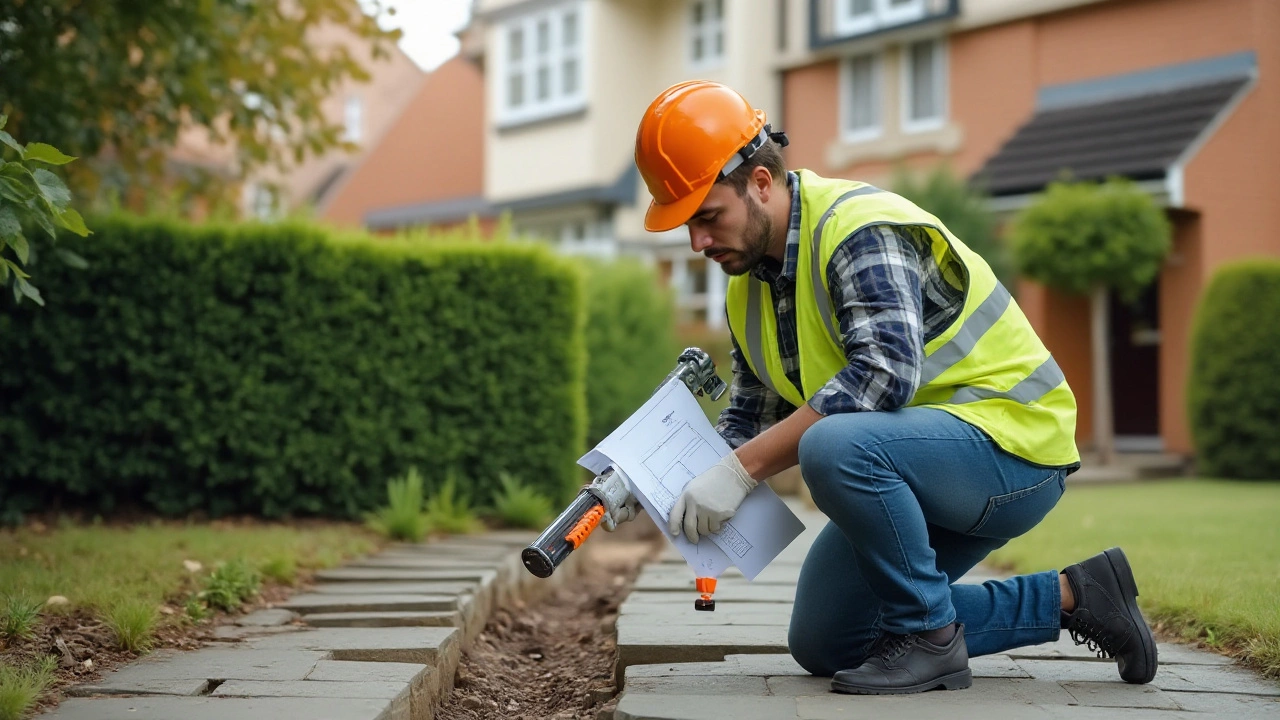Crack Solutions: Your Guide to Stopping Damage Fast
When dealing with crack solutions, methods to diagnose and repair cracks in walls, floors, and foundations. Also known as fracture repair, it often starts with foundation settlement, the gradual sinking or shifting of a building’s base that creates structural cracks, visible splits that can compromise stability. Crack solutions encompass identifying the cause, selecting the right material, and applying the fix before moisture or load stress makes things worse.
Most cracks appear because of moisture control failures, temperature swings, or soil movement. When moisture seeps into brick or concrete, it expands, pushes the material apart, and leaves a hair‑line breach. In the same way, rapid temperature changes can cause concrete to contract, leaving diagonal or vertical cracks. Recognizing these triggers helps you decide whether a simple sealant will do or if you need a deeper structural repair. This is why moisture control, keeping walls dry and preventing water intrusion is a prerequisite for any lasting solution.
Before you pick up a caulk gun, a professional assessment can save you money and headaches. Contractors use crack monitors, moisture meters, and sometimes CCTV cameras to see inside walls. Their reports tell you if the crack is merely cosmetic or a sign of load‑bearing failure. If you prefer a DIY route, start with a visual inspection: map the crack length, width, and direction, then compare it to known patterns. This quick audit sets the stage for the right building repairs, targeted fixes that restore integrity.
DIY repair kits work well for hairline and non‑structural cracks. Epoxy injection, polyurethane foam, or flexible acrylic sealants can fill gaps and stop water ingress. The key is surface preparation: clean, dry, and roughen the area so the filler bonds properly. For deeper or load‑bearing cracks, you may need steel reinforcement, carbon‑fiber straps, or even underpinning. Those techniques require specialized tools and knowledge, so calling a specialist after a professional assessment is often the safest bet.
Prevention is as important as the fix itself. Proper grading around the house, functional gutters, and breathable wall finishes keep moisture out. Soil testing before construction helps you choose the right foundation type and avoid future settlement. Regular inspections—especially after heavy rain or an earthquake—let you spot new cracks early, making the repair process quicker and cheaper.
Common Crack Types and How to Treat Them
Understanding crack patterns makes it easier to choose the right solution. Hairline cracks (less than 1 mm) usually result from shrinkage and need only a sealant. Vertical cracks longer than 30 cm often signal settlement; they require a structural assessment and possibly a carbon‑fiber strap. Diagonal cracks can indicate differential movement and may need underpinning. Stair‑step cracks in brick walls usually point to foundation issues and benefit from a combination of moisture control and reinforcement.
Each type follows a simple decision tree: identify cause, evaluate severity, select material, and apply the fix. Once you’ve mastered that flow, you can handle most residential crack problems without a second opinion. Of course, if a crack widens quickly or appears near load‑bearing walls, pause and call a professional.
Below you’ll find a curated list of articles that walk you through every step— from spotting the first sign of settlement to choosing the right epoxy for a concrete floor. Dive in to get practical tips, product recommendations, and step‑by‑step guides that match the crack solutions you need today.
Effective Solutions for Foundation Crack Repair: A Comprehensive Guide
Addressing foundation cracks promptly is crucial for maintaining the structural integrity of any building. There are several methods available, each suitable for different types of cracks and infrastructure conditions. This article walks through the most effective strategies, common issues, and preventive tips related to foundation crack repair. Understanding the variety of repair options available can save homeowners significant time and money in the long run.
full article




